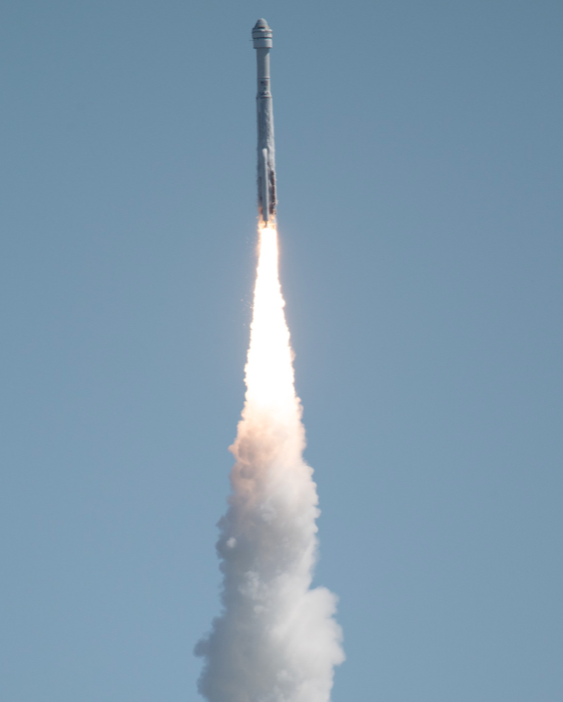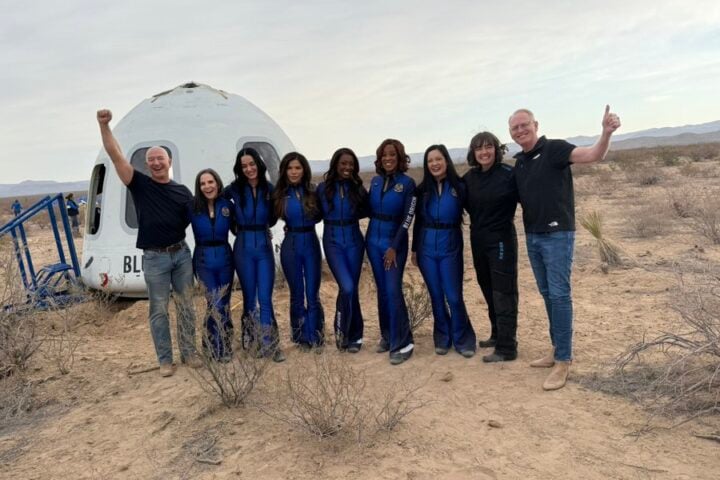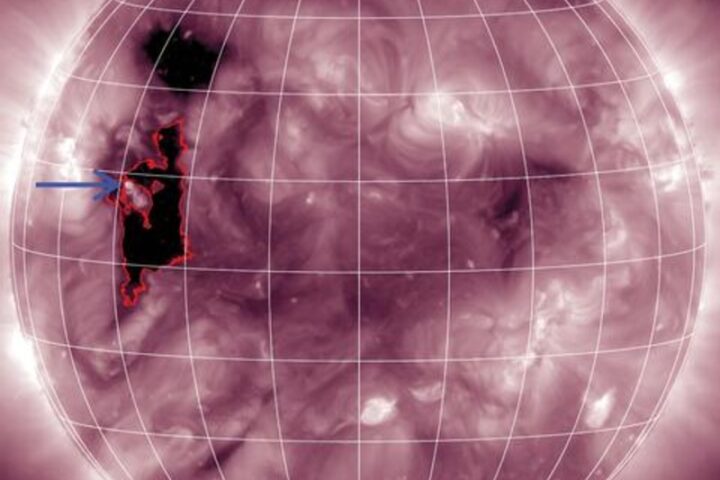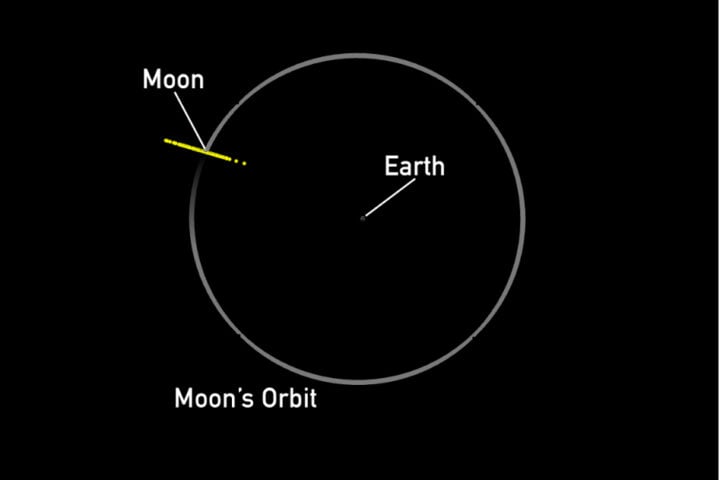NASA’s two most veteran astronauts, 61-year-old Butch Wilmore and 58-year-old Suni Williams, are finally flying to the International Space Station aboard a Boeing Starliner spacecraft. The United States has a new spacecraft. It is the country’s sixth crewed spacecraft since Alan Shepard became the first American in space with the Mercury capsule in 1961. Following Mercury were Gemini, Apollo, the Space Shuttle, and SpaceX’s Crew Dragon. There is also the Orion spacecraft for Artemis lunar missions, which has yet to complete its first crewed flight.
Third time’s the charm. Boeing’s Starliner spacecraft launched aboard a United Launch Alliance (ULA) Atlas V rocket at 14:52 UTC on Wednesday and separated from the Centaur second stage 15 minutes later. It’s a historic day for the Atlas rocket family as well, which hasn’t launched humans into space since Gordon Cooper’s Mercury mission, one of the first American astronauts, in 1963.
The launch was originally scheduled for May 6 but was canceled with astronauts ready to launch due to a problem with a liquid oxygen valve on the Atlas V rocket. When Boeing and NASA engineers checked the status of the spacecraft, they discovered a helium leak caused by a defect in a rubber seal. NASA decided that the leak (about 200 grams of helium per day) did not pose an unacceptable risk to the mission, so they proceeded without asking Boeing to fix it, which would have taken months. Consequently, Boeing had to design an alternative method to deorbit the spacecraft in case of a catastrophic failure. Once this was resolved, the second launch attempt was automatically aborted four minutes before liftoff due to a failure in a ULA ground computer.
Heading to the International Space Station. The Starliner is now traveling on a nominal trajectory to its destination. If all goes well, Boeing’s spacecraft will dock with the International Space Station in 25 hours, where Wilmore and Williams will join Expedition 71 in Earth orbit. This Starliner test flight is designed to certify the spacecraft for crewed launches, so the astronauts won’t spend much time in space. They will stay on the International Space Station for eight to ten days, conducting various tests on the Starliner, including an emergency simulation where they will have to take refuge aboard the spacecraft.
Similar Post
“This crew flight test represents the beginning of a new era of space exploration as we watch astronauts Wilmore and Williams put Boeing’s Starliner through its paces on the way to the International Space Station,” said Ted Colbert, Boeing Defense, Space & Security President and CEO. “This is a great start. We look forward to getting the astronauts safely to the space station and back home.”
Wilmore and Williams have been in quarantine for over a month, have gone through two aborted launches, and are now traveling to the ISS with some personal items like t-shirts from their alma maters and family mementos. In Sunita’s case, she is bringing items related to her two Labradors. If tomorrow’s docking and the return of both astronauts in ten days go as smoothly as the launch, the Starliner can proceed with the six regular NASA flights it already has booked.
It has taken Boeing a great deal of effort to get to this point. In 2010, NASA selected two companies to initiate a new era of commercial flights to the ISS. SpaceX’s Crew Dragon flew for the first time with two astronauts aboard in 2020. Since then, it has transported 50 people to space. NASA awarded Boeing a fixed contract of $4.2 billion for its development, while SpaceX received $2.6 billion from the agency because it was already working on the development of the cargo Dragon spacecraft. Boeing managed this fixed budget terribly, and the Starliner has suffered numerous delays. Nearly a decade later, the company has ended up losing $2 billion out of pocket due to a series of increasingly concerning design flaws and vulnerabilities.
The most serious: Boeing, NASA, and ULA had to repeat their uncrewed test flight due to a failure in its internal clock that prevented it from docking with the ISS. Since then, the Starliner has had problems with its propulsion system valves, parachutes, and even a potentially flammable tape that wrapped around some cables. Now they have finally launched, much to the joy of the engineers involved in the project, as well as the astronauts and their families.
After successive postponements, a United Launch Alliance (ULA) Atlas V rocket finally launched the Boeing Crew Space Transportation (CST)-100 Starliner spacecraft with NASA astronauts Barry “Butch” Wilmore and Sunita “Suni” Williams to the International Space Station (ISS) this Wednesday as part of the crewed flight test (CFT). After separating from the Atlas V, the Starliner engines ignited and continued the flight to orbit to reach the ISS. CFT is ULA’s first crewed launch. The liftoff took place from Space Launch Complex-41 at Cape Canaveral Space Force Station in Florida.
CFT is the final test to demonstrate the Starliner system’s end-to-end capabilities to transport crews to and from the space station as part of NASA’s Commercial Crew Program. The unique configuration of the Atlas for Starliner includes a dual-engine Centaur upper stage to provide the performance needed to shape the trajectory for crew safety; a launch vehicle adapter that structurally joins the Starliner to the Atlas V rocket for its ascent; a 1.8-meter-long aeroskirt to improve the aerodynamic characteristics, stability, and loads of the Atlas V; and an emergency detection system that provides an additional layer of safety for astronauts traveling on the reliable Atlas V rocket.
NASA’s Commercial Crew Program is working with the U.S. aerospace industry through a public-private partnership to launch astronauts on American rockets and spacecraft from U.S. soil. The program’s goal is to provide safe, reliable, and cost-effective transportation on space station missions, allowing for additional research time. Nearly 10 years ago, in September 2024, NASA contracted Boeing and SpaceX to transport American astronauts from the U.S. to the ISS with proprietary technology, ending reliance on Russia. A $4.2 billion contract with Boeing and a $2.6 billion contract with SpaceX returned private companies to tasks that, since 2011 with the retirement of the space shuttles, had been in the hands of Russia’s Roscosmos and its Soyuz spacecraft, which cost about $70 million per astronaut transported to the ISS.
The crewed flight test mission makes history in several ways. As the first crewed launch of Boeing’s Starliner spacecraft, Williams is the first female astronaut to perform the first flight of a crewed spacecraft. The launch also marks the first crewed launch on the ULA Atlas V rocket and the first crewed launch on an Atlas family rocket since Gordon Cooper on the last flight of the Mercury program aboard the “Faith 7” in May 1963.

















